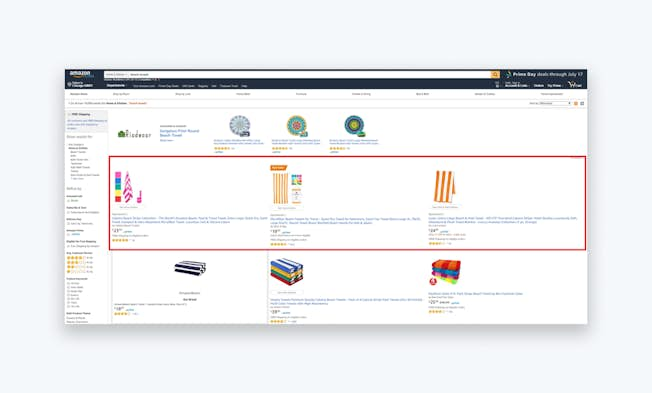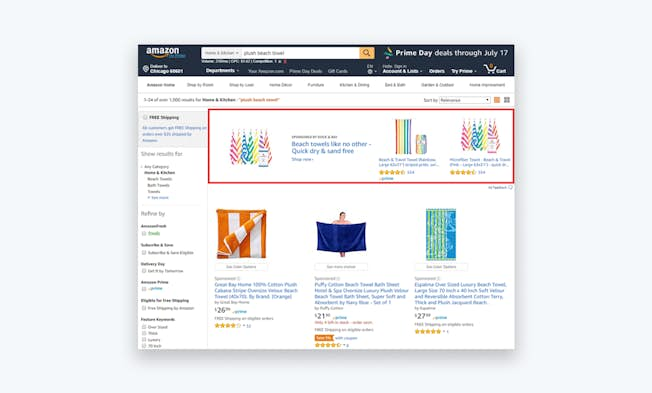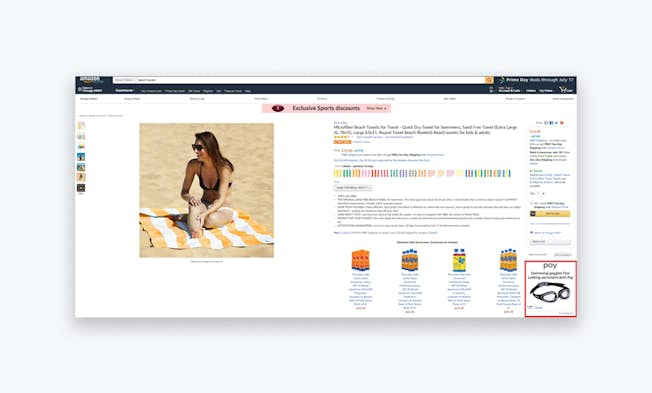‘Will it be Amazon or will it be Google?’ There’s a lot of talk in the market right now about this question. It’s not the first time we’ve heard such chatter – back in 2010 people were asking ‘Will it be Facebook or will it be Google?’
We learned from that experience that it can be both. As a result, more than likely we’ll simply see Amazon added as a third strand to the current Google/Facebook duopoly.
The question is whether there is room. Will Amazon not simply eat into the ad budgets for the other two major digital channels? The truth is the real loser in the scenario will be traditional media. The budget to fund Amazon campaigns must come from somewhere.
Google is pretty accountable in terms of its function in driving sales and Facebook is getting better at showing how it drives sales, so its value is established. Traditional media, on the other hand, is notoriously loose in terms of how it accounts for return on investment (ROI).
Of course, it can be done correctly but that kind of large-scale quantitative and qualitative research is both time-consuming and expensive and may not seem worth the effort, compared to reviewing a dashboard from a digital channel.
However, before we predict the complete demise of traditional media, let’s look at the drivers of the budget shift to Amazon in particular.
Early Days: Relentless.com
Back in 1994, Amazon’s founder Jeff Bezos registered the domain Relentless.com. If you type this URL into your Internet browser, it redirects you to Amazon. This type of thinking sets the precedent for what Amazon is all about. Cynicism aside, it demonstrates the core values of Amazon and how it has gone from 1990s online book merchant to the everything store it is today, with a prominent role in our daily purchase lives.
That’s the thing, Amazon is a retailer or marketplace facilitator of commerce/sales. So before we get ahead of ourselves thinking it will take over all marketing from Google, Facebook and traditional media, we must understand its core function – direct eCommerce sales. Then we must understand people and consumers.
At present, we don’t live in a world where people are buying all the time, as people do spend significant time online doing other non-consumer things. In the case of Google and Facebook, people search for information and ideas using search engines or share and browse content on social media, while their actions are interrupted by YouTube pre-rolls, Facebook native ads, banner/display promotions or paid search advertisements. This is why Amazon is different – the user has a different mindset.
The Consumer Mindset
The fact is that no one goes to Amazon to browse content, they go to Amazon for a simple commercial purpose. They are there to buy something, and this is the consumer mindset which Amazon has access to.
This is what makes Amazon so attractive to businesses. The users are so far down the conversion funnel that you are greeting them at the till! In time, Amazon may add more top-of-funnel features to their platform to compete with the awareness and consideration functionality of Google and Facebook, as well as the conversion territory in which they are all currently competing.
Advertising on Amazon
As native or partly native Internet users and marketers, we are familiar with the standards of web advertising. As innovative as Amazon is, it hasn’t swayed too far from what we generally see as tried and tested web ad formats. Let’s take a look at some promotional tactics on Amazon.
The Buy Box
Being in the Buy Box is a prerequisite for advertising on Amazon – if you’re not in the Buy Box, you can’t advertise. There are a number of things businesses should do to ensure they get in the Buy Box. Most of this is straightforward, so follow these guidelines.
Firstly, you need to have a Professional Seller Account or Pro Merchant Account in the EU. This is a plan for retailers which can be purchased from Amazon here. Then you can link your eCommerce product inventory via a feed from your website to Amazon and start selling.
Next up you need to ensure you are selling stock items that are new. It is possible to sell used/second-hand items on Amazon but that’s in a different Buy Box. Focus on new stock items to advertise effectively. Out-of-stock items will not be shown in the Buy Box. Like quality score in other channels, you account needs to have positive historical account performance to be considered for inclusion in the Buy Box.
Amazon looks at your feedback score, shipping methods, price and delivery speed to understand your account performance. Once you start to appear regularly in the Buy Box you can consider what type of advertising to utilize.
The Platform Options
The two main platform options are Amazon Marketing Services (AMS) and the Amazon Advertising Platform (AAP). The first option, AMS, is more of a self-serve Google Ads style platform using keywords, product or interest-based targeting on Amazon to serve display ads. Depending on whether you are an Amazon Vendor or Amazon Seller, there are different advertising options available to you on AMS.
So what’s the difference between the Amazon Seller and Amazon Vendor categories? Vendors are large manufacturers or wholesalers who sell directly to Amazon, you are essentially an Amazon supplier, and this is an invite-only option. Sellers are those who wish to use Amazon’s platform to sell their goods, similar to an eBay store. You are not selling directly to Amazon, but you can use Amazon’s platform to sell your products to Amazon customers for a fee.
The second advertising option, AAP, is for larger eCommerce outlets. You need to spend a minimum of $15,000 per month to avail of this part-managed service, and it’s done through an Amazon representative/account manager. There are more options and support available to advertisers on AAP and this is also Amazon’s programmatic offering.
Sponsored Product Ads

This is the most straightforward and impactful option in the beginning. These are sponsored products that appear above and below the organic product results and on product pages themselves in Amazon’s search feature.
These ads are triggered by keywords and contain an image, product star-rating, price and other product details. It is recommended that when beginning a Sponsored Product ad campaign, you should run your campaigns on auto-targeted option for at least two months to see the types of search queries that Amazon users input into the search bar to find your product. This increases your visibility and allows you to get a deeper understanding of the types of searches that people perform on Amazon as opposed to Google/Bing etc. It’s also possible to bid on competitor terms, so to protect your brand visibility, it’s always worthwhile running some brand activity on Amazon.
Headline Search Ads

These are top-of-funnel ads used for brand and product category awareness. Advertisers can serve ads containing up to three products at any one time to showcase their offering at the top of the Amazon search results page for a category. When people click through they are brought to a branded landing page which showcases the advertiser’s products. It’s recommended that you use some of the best performing keywords and searches from your Sponsored Product ads to trigger your Headline Search ads too.
Product Display Ads

This ad format is exclusive to direct suppliers of Amazon, i.e. Vendor Central merchants. These are interest-based visual ad formats which show up on product pages, near reviews of other products or your own products to encourage people to purchase. These ads are intended to be high-impact direct response display ads in key locations in the Amazon conversion funnel to drive sales.
Conclusion
Amazon is a great tool for eCommerce vendors, though this may expand to other types of products in time. It allows you to diversify your media budgets and resources away from other channels to drive incremental returns for your overall bottom line. At the moment, it’s in the early stages so there is an opportunity for early adopters to capitalize on the new marketplace as an accompaniment to existing digital marketing strategies.
Upgrade to Power Membership to continue
your access to thousands of articles, toolkits, podcasts, lessons and much much more.
Become a Power Member- Login
- View Courses
- - - -
- Courses
- Resources
- - - -
- My Account
- Change Password
- Logout





